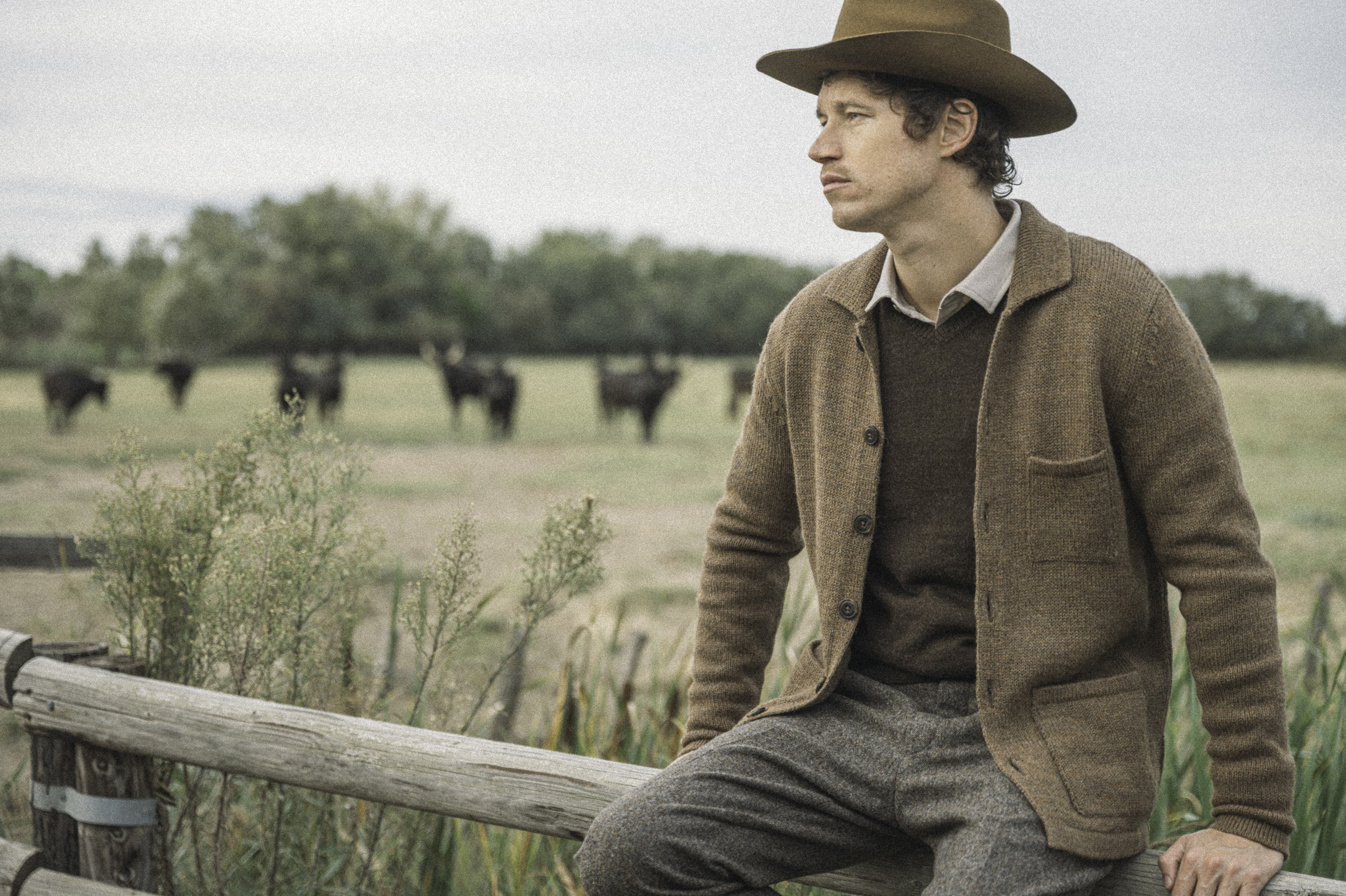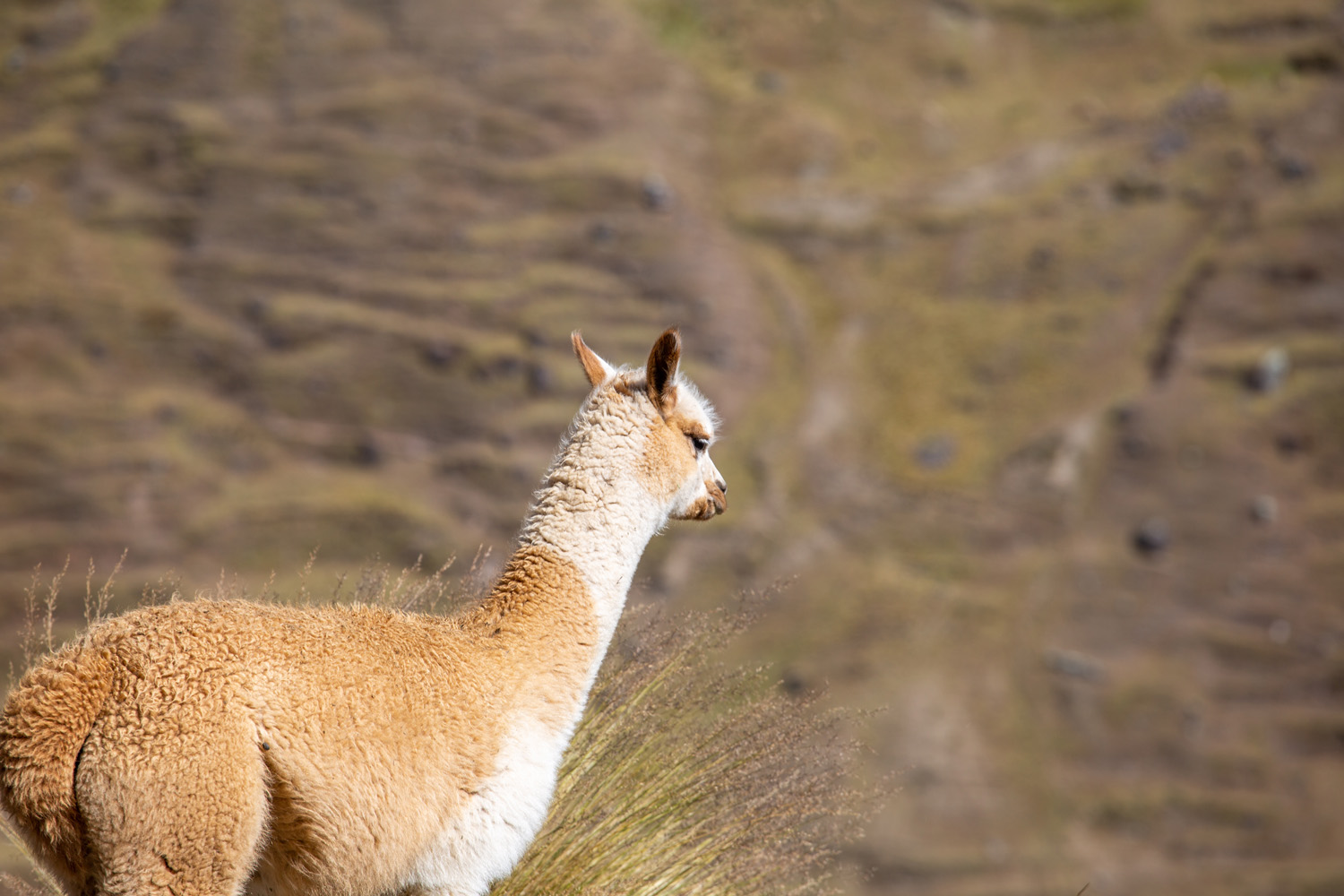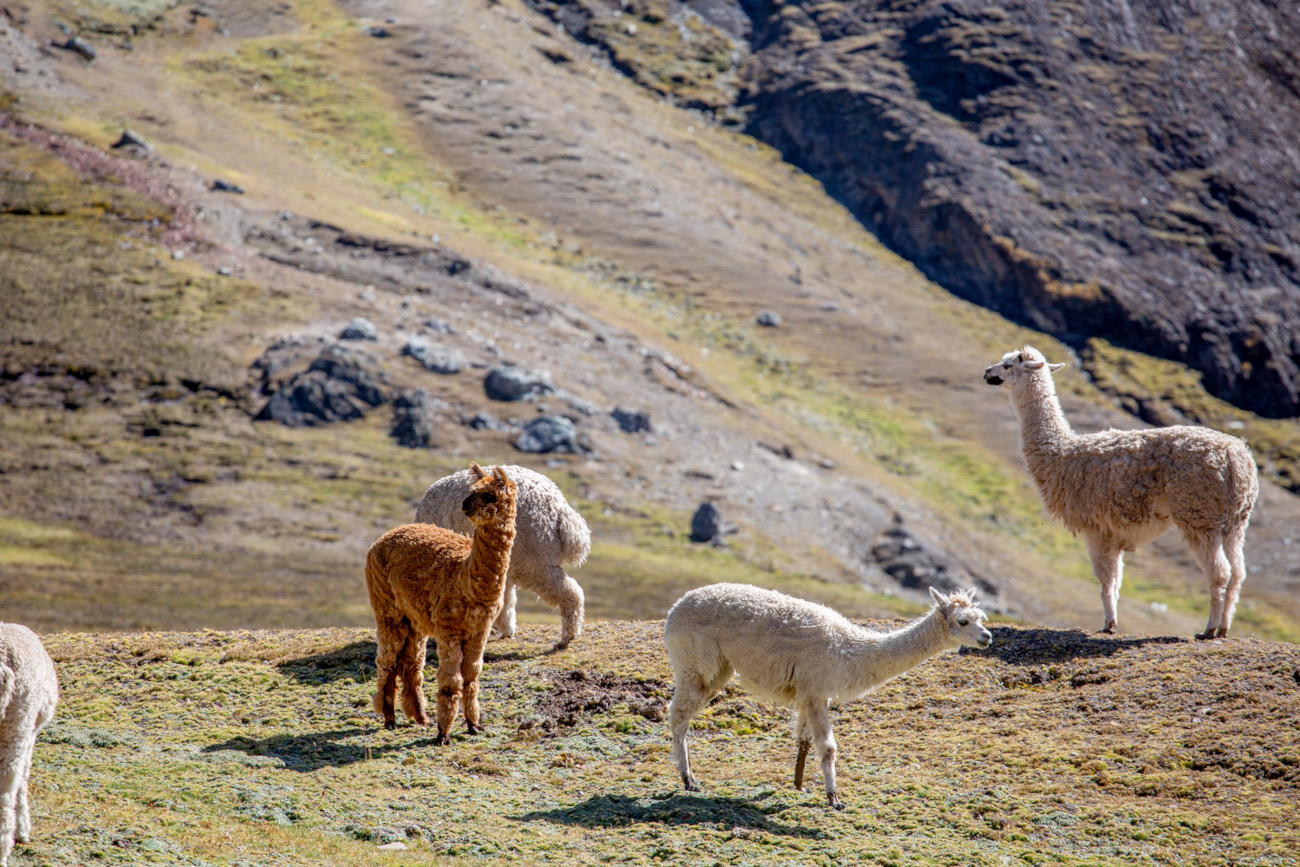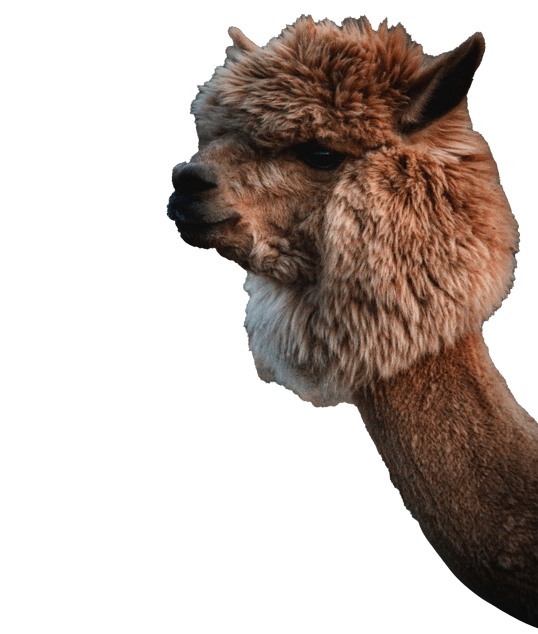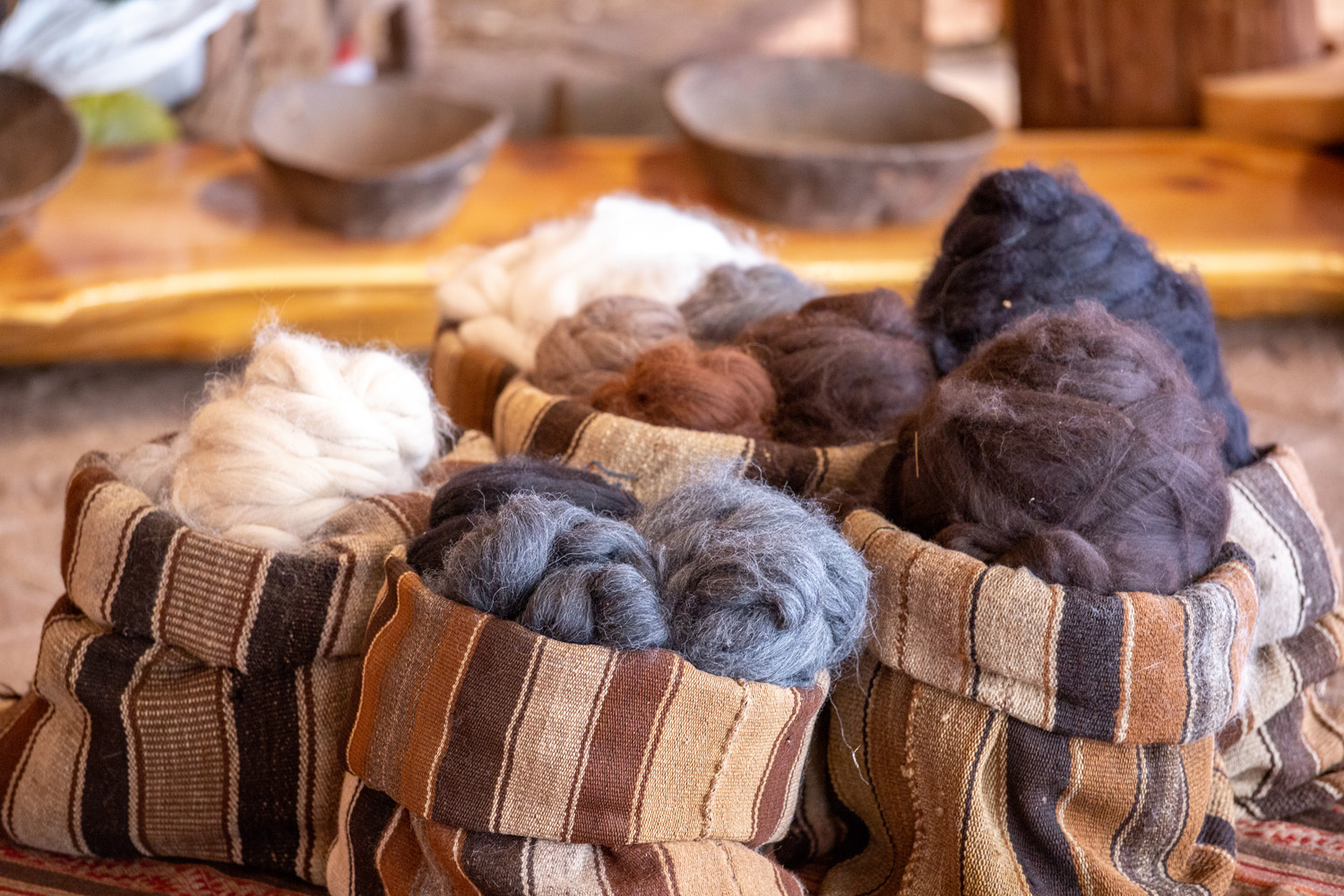The Peruvian Alpaca: When Extreme Forges Luxury
At 4,800 meters above sea level on the Peruvian Altiplano, where the air contains 40% less oxygen and temperatures plummet 35°C between day and night, a thousand-year-old alchemy takes place. Alpacas here produce the warmest fiber in the world, three times more insulating than merino wool, softer than cashmere, and yet accessible. For the Incas, this fiber was worth more than gold. Today, it redefines sustainable luxury.
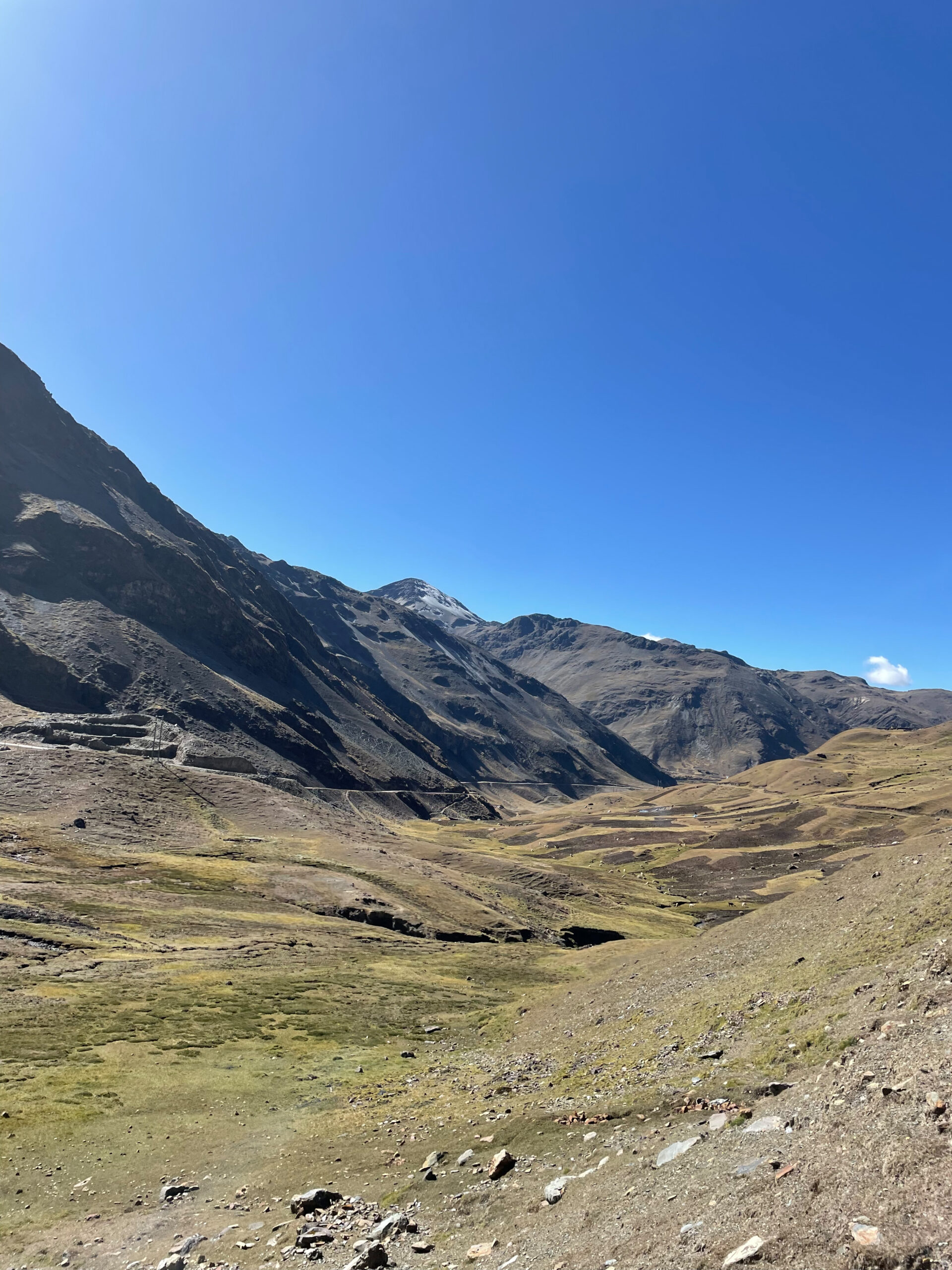
The Invisible Hierarchy of Luxury
Not all alpacas are created equal. The Peruvian industry distinguishes several grades with scientific precision, measured in microns, thousandths of a millimeter.
THE Royal Alpaca represents the Holy Grail: less than 18 microns in diameter. Only 1% of the world's alpacas produce this exceptional quality, taken exclusively from the animal's back and flanks.
THE Baby Alpaca, a misleading term since it does not come from young animals but from the first shearing or the finest sorted fibers, measures 20 to 23 microns. It is the standard of accessible luxury, the one that makes up the majority of high-end sweaters. Softer than cashmere according to many touch tests, it offers comparable softness for a price 30 to 50% lower.
THE Superfine Alpaca (23 to 26 microns) remains finer than standard merino wool and is ideal for structured pieces.
But there is another, less well-known distinction: Huacaya versus SuriThe Huacaya, with its curly and voluminous fleece (85 to 90% of the population), produces a crimped fiber ideal for knitting. The Suri, extremely rare (10 to 15% only), develops smooth and shiny strands like silk, of a longer length, perfect for weaving and sought after by haute couture houses.
The gold of the Andes: more than a nickname
Call it "Oro de los Andes," "Fibra de los Dioses," or "Oro Blanco," each appellation tells a historical truth. The Incas didn't mess around with metaphors. In their civilization, textiles were literally currency, the ultimate measure of wealth. Gold and silver? Merely decorative metals.
Qompi, the sacred fabric of royal alpaca woven by elite artisans, reached over 600 threads per inch, a density unmatched in Europe until the Industrial Revolution. Inca emperors rewarded loyalty with cloth, not ingots.
This sacred hierarchy survives today in the Quechua and Aymara communities of the Altiplano. In Puno, Cusco, and Arequipa, 90,000 to 120,000 families still depend on alpaca farming. But let's not romanticize: the reality is often brutal. These breeders, direct descendants of Inca master weavers, mostly live below the poverty line.
The fair trade system is making progress. Organizations like the Centro de Textiles Tradicionales del Cusco and Allpa are working with cooperatives to ensure fair prices and preserve ancestral techniques.
"For the Incas, this fiber was worth more than gold. Alpaca is not the future of sustainable luxury, it is already the present."
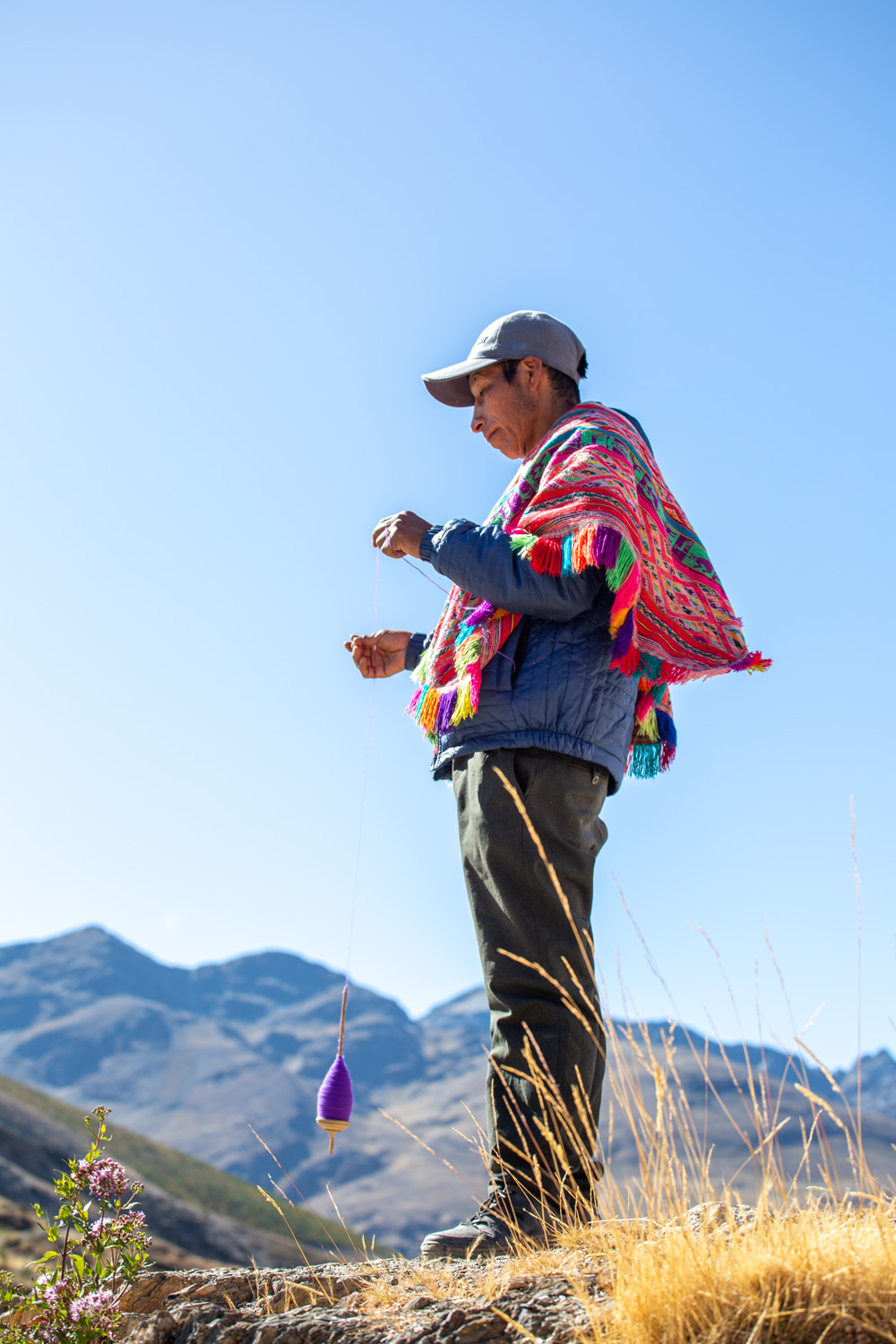
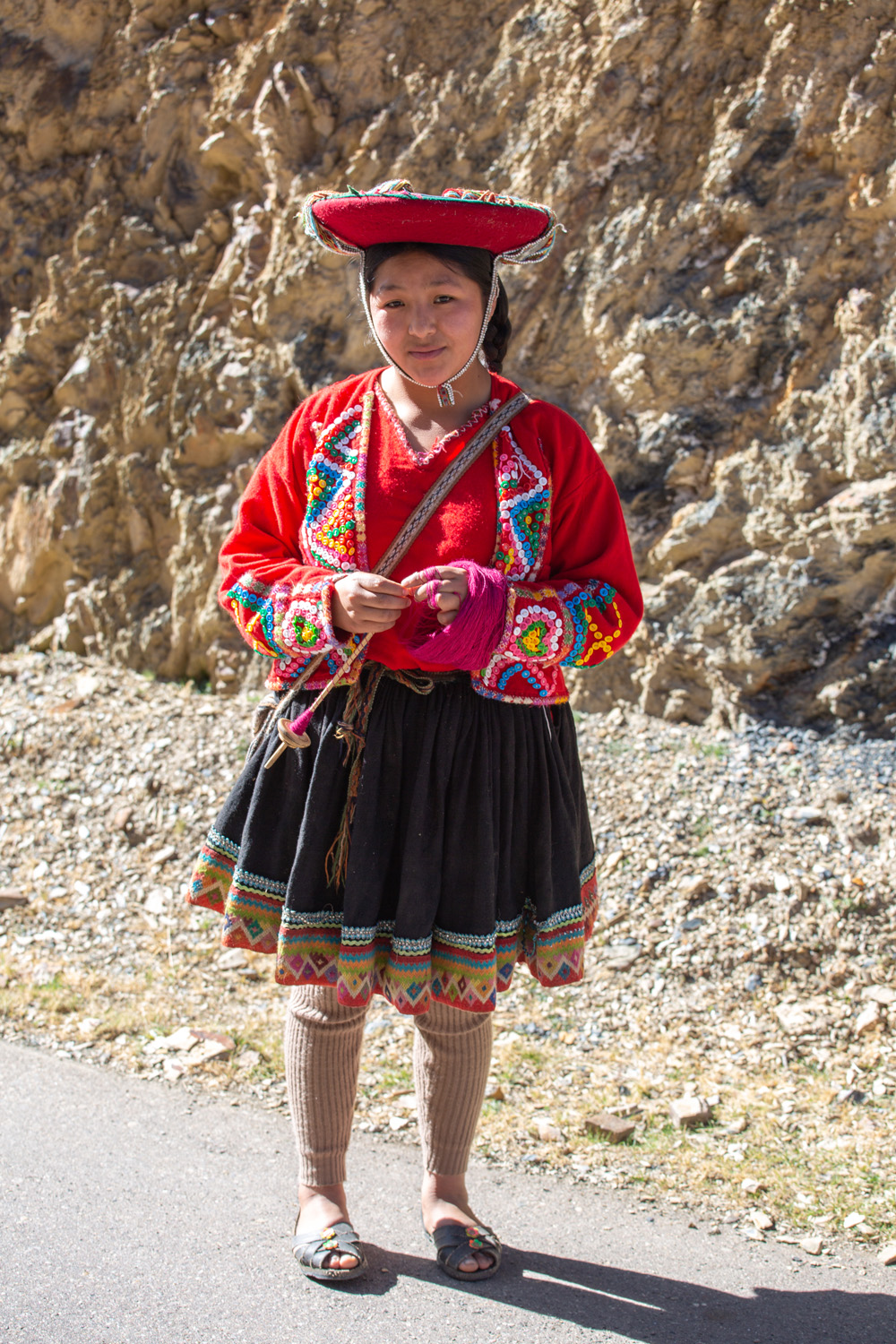
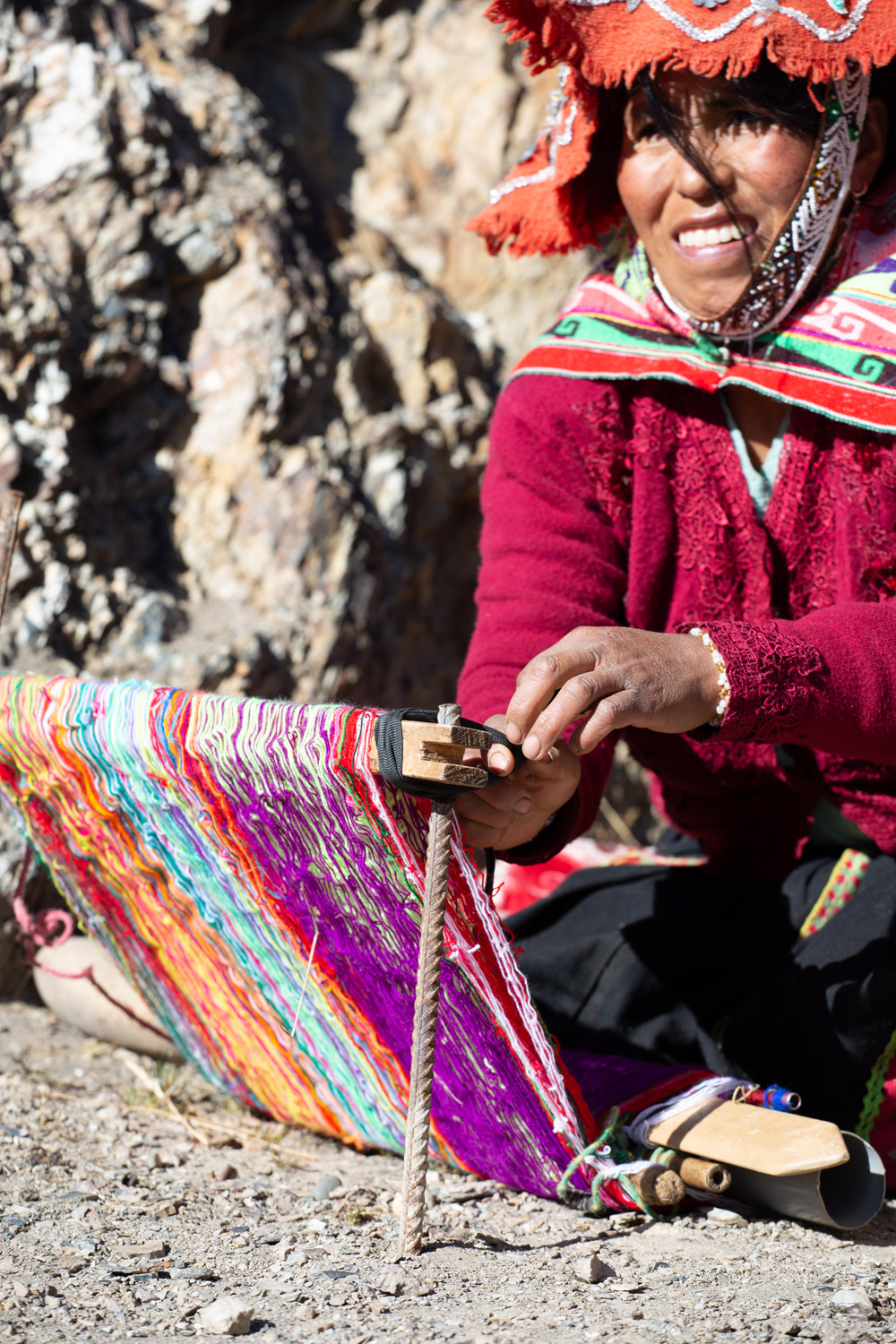
The science of gentleness
Why is alpaca softer than sheep's wool? Why is it warmer than cashmere? The answers are written in the microscopic structure of the fiber.
Under an electron microscope, an alpaca fiber reveals cuticular scales only 0.3 to 0.4 microns high, compared to 0.8 microns for sheep's wool. These scales are not only lower, but also flatter and less prominent. The result: less friction on the skin, less irritation of nerve endings, and zero "stinging" effect. Merino wool, even superfine, has protruding scales that require aggressive chemical treatment ("superwashing" with acetone and peroxide) to reduce itching. Alpaca, on the other hand, is naturally smooth.
The exceptional heat comes from the medullation, this hollow structure at the heart of the fiber. Unlike cashmere and merino (solid fibers), alpaca contains microscopic air pockets. Air is a near-perfect insulator. Tests conducted by Yocum-McCall Laboratories and the Textile Research Institute confirm: Alpaca is three times warmer than sheep's wool.
Even more impressive: alpaca retains only 8% of moisture compared to 30 to 50% for merino wool and 15% for cashmere. This property explains why an alpaca sweater instantly wicks away perspiration without ever feeling clammy, and why it retains its insulating power even when damp.
Add in the total absence of lanolin (that allergenic sheep oil), and you get a hypoallergenic, soft, thermoregulating fiber that requires no harsh chemical treatment. The yield after washing? 87 to 95% for alpaca, compared to 43 to 76% for wool, proof of its natural cleanliness.
“Three times warmer than wool. Softer than cashmere. Alpaca pills four times less and lasts 20 to 30 years.”
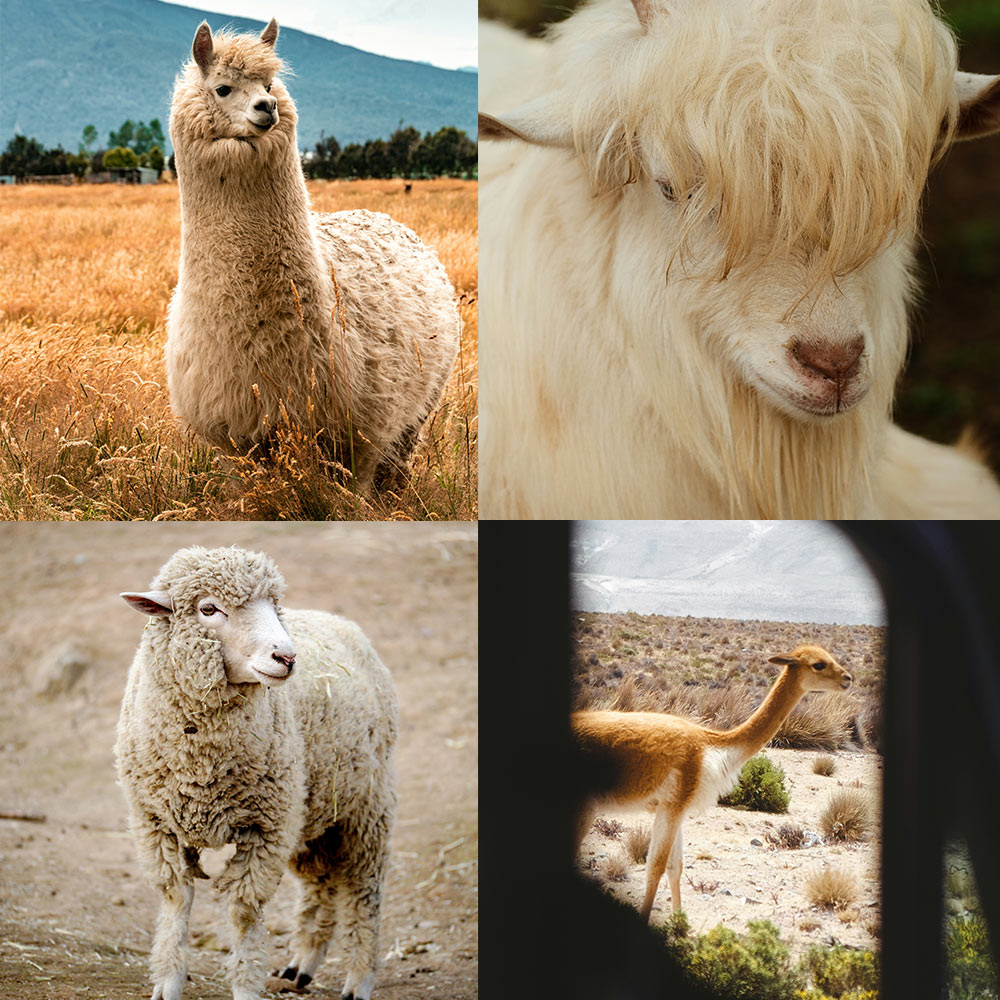
The 22 Shades of Authenticity
The alpaca offers 22 natural colors, From pure white to jet black, including beige, tan, brown, silver gray, and rose gray. It has the widest color spectrum of any animal fiber, with over 300 shade variations across classifications. This natural palette eliminates the need for chemical dyeing for many products, a significant environmental benefit in a textile industry responsible for 20% of global water pollution.
“22 natural colors. The widest color spectrum of any animal fiber.”
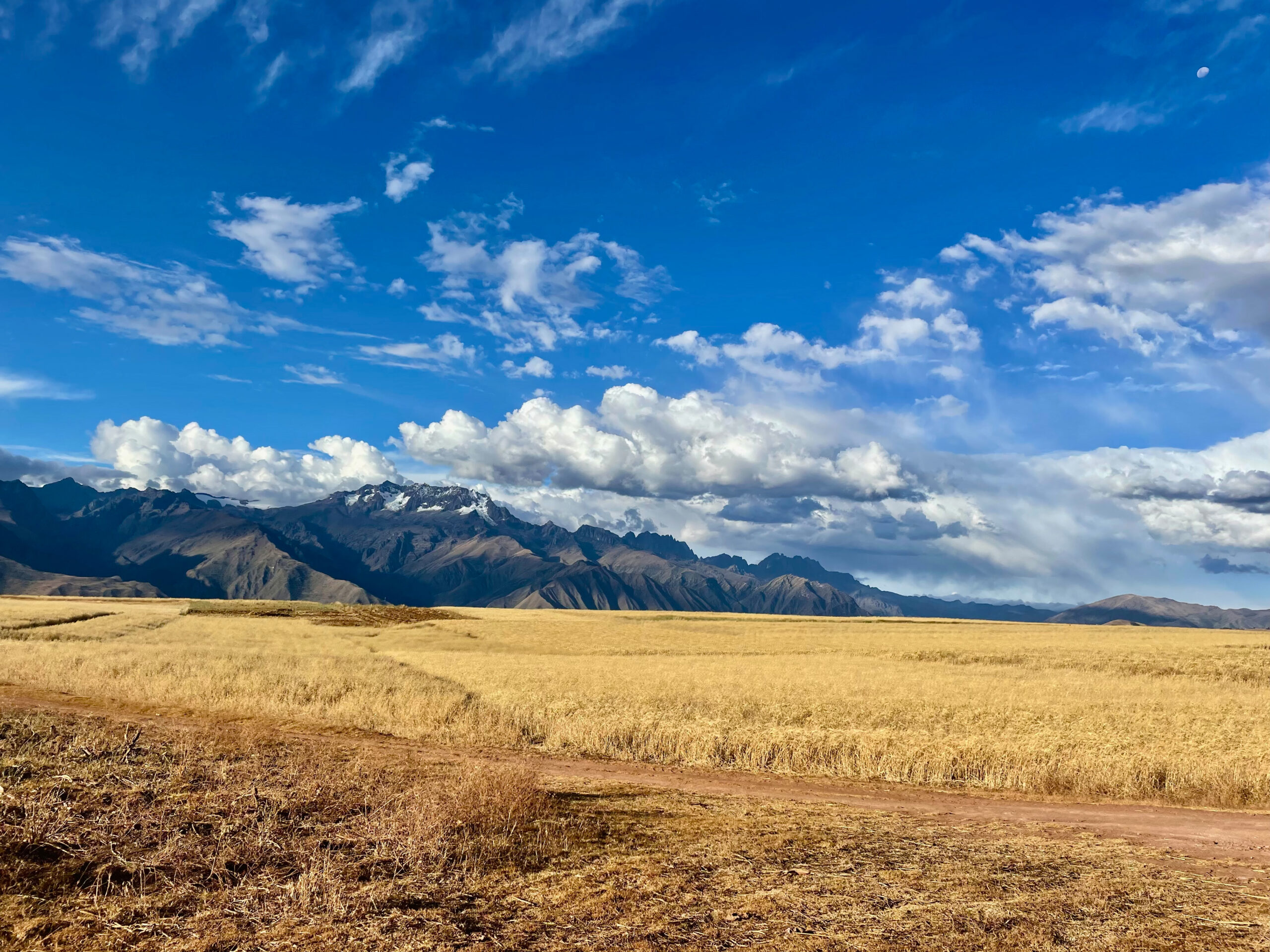
The minimal footprint
Let's talk impact. Because the luxury of tomorrow cannot ignore the climate emergency.
An alpaca consumes 1 to 1.5 gallons of water per day compared to much more for a sheep. It eats only 1.8% of its body weight daily (compared to 25% for sheep/goats), thanks to a remarkably efficient three-stomach digestive system. Its padded feet, two toes with soft pads, do not compact the soil like the sharp hooves of sheep. It grazes selectively, pinching the tops of grasses without tearing out the roots, allowing for rapid pasture regeneration.
Alpacas methodically defecate in specific communal areas, thus avoiding pasture contamination and facilitating parasite control. Methane emissions? Lower than sheep and cattle thanks to a more efficient digestive process. Lifespan? 15 to 20 years compared to 10 to 12 for a sheep, maximizing yield per animal.
Compare this to fast fashion: cotton requires astronomical amounts of water and pesticides; polyester pollutes the oceans with microplastics; even mass-produced cashmere contributes to the desertification of the Asian steppes. The Peruvian alpaca, raised using traditional methods on the harsh Altiplano where nothing else grows, represents a model of sustainability by necessity.
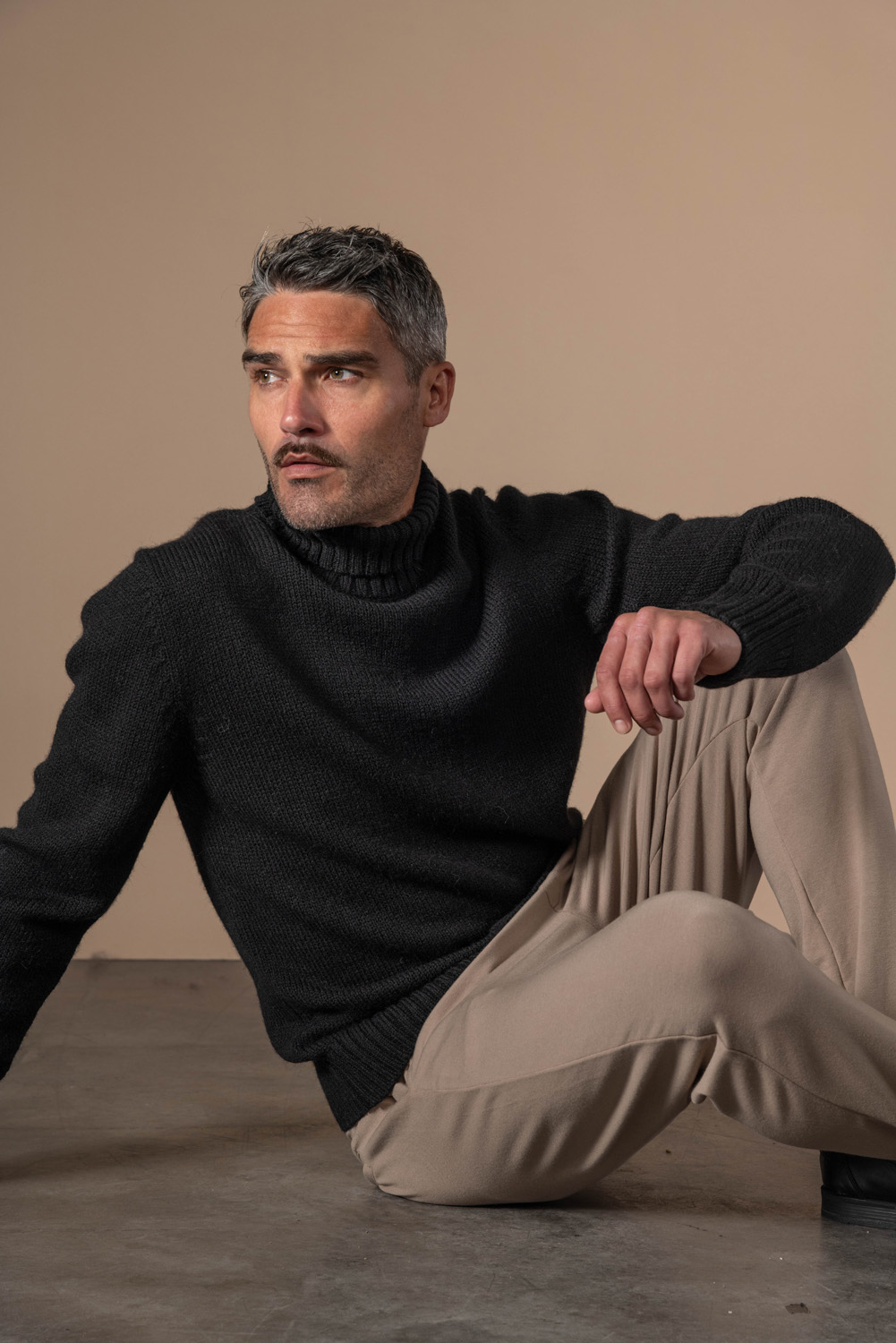
Why an alpaca sweater?
First, the heat-to-weight ratioA baby alpaca sweater weighs almost nothing but insulates like a technical down jacket. Perfect for travel, a single sweater covers your needs from Parisian spring to cool Alpine evenings.
Then the all-season thermoregulationYes, alpaca works even in summer. The hollow fibers wick away heat and moisture at twice the speed of merino, maintaining dry comfort in temperatures as low as 25°C or as low as -10°C.
There absolute non-irritation : no lanolin, just flat microscopic scales. Even those with the most sensitive skin, people with wool allergies, and children can all wear alpaca directly on their skin.
THE zero maintenance (or almost). Alpaca is naturally resistant to odors, stains, and dirt. You can wear a sweater for several weeks in a row without it smelling. When you wash it (by hand in cold water or at an eco-friendly dry cleaner), it dries flat overnight, retains its shape, doesn't shrink, and doesn't felt.
There exceptional longevity. Customer testimonials speak of sweaters worn almost daily for 20, 30, 40 years. The long (8-12 cm) and resistant fiber practically does not pill, does not get holes, does not thin over time. Let's calculate: €250 divided by 1,300 wears over 25 years = €0.19 per use. Less than a coffee for daily luxury.
THE timeless styleAn alpaca sweater has that natural sheen, that elegant drape that works just as well in a Zoom meeting as it does at a fine-dining restaurant. It's the definition of thoughtful minimalism: one piece, a thousand uses.
Alpaca at ANONYM APPAREL:
purity and innovation
At ANONYM APPAREL, we offer two complementary approaches:
100% Baby Alpaca : Absolute purity. 20 to 23 microns of softness, exceptional warmth, hypoallergenic, natural thermoregulation. For those seeking the authentic alpaca experience, uncompromising Andean luxury.
Blend 60% Alpaca / 5% Merino / 35% Polyurethane : Textile intelligence. This blend retains the essential qualities of alpaca (softness, warmth, comfort) while incorporating the benefits of merino (elasticity, resilience) and PU (structure, hold, ease of care). The result: a piece that combines natural luxury with contemporary performance, perfect for intensive daily use without sacrificing aesthetics or comfort.
Both options embody our philosophy: luxury is not a matter of dogma, but of intelligence. Choosing 100% alpaca or the technical blend is simply defining your priorities between pure tradition and functional modernity.
“An alpaca produces 2.5 kg of fiber per year. It takes four cashmere goats to make a single sweater.”
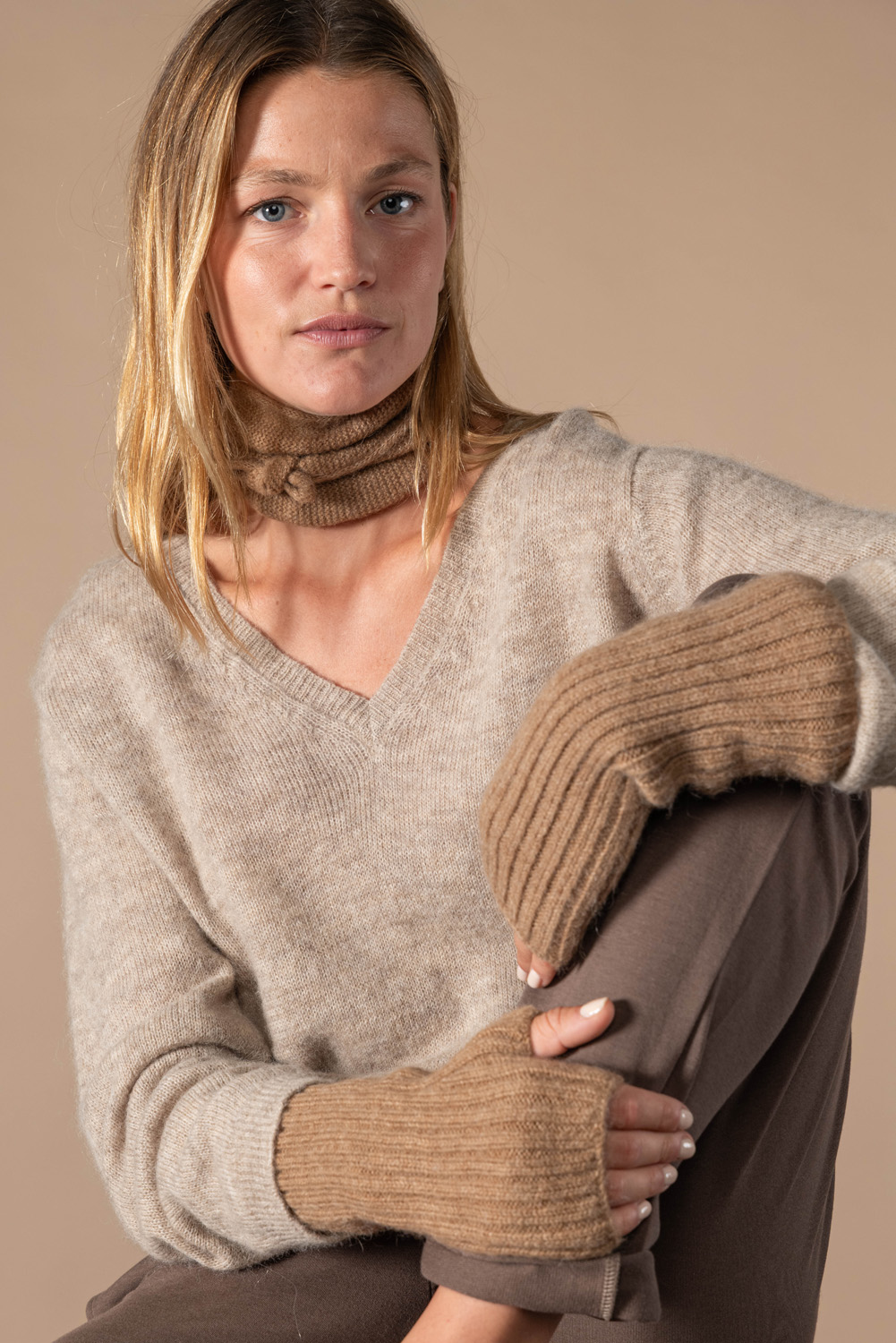
The investment that lasts
Let's be honest about prices. A quality baby alpaca sweater costs €150 to €300 online. Alpaca is positioned as the rational affordable luxury : cashmere softness, superior durability, affordable price. One alpaca produces enough fiber for 4 to 5 sweaters per year; it takes four cashmere goats for a single sweater. This production math explains the price difference. Alpaca has not suffered the devaluation of mass-produced cashmere. It remains mostly pure, artisanal, and traceable.
Over 20 years, if your €250 alpaca sweater survives (and it will), your cost of ownership drops below €0.20 per wear. The €400 cashmere will likely need to be replaced after 10 years of pilling and wear, doubling its actual cost.
Living Legacy
Behind every ANONYM APPAREL alpaca sweater is Maria, a herder at 4,500 meters, who rises before dawn to lead her herd to the meager pastures of Icchu. There's also a 6,000-year-old tradition, a strap-loom weaving technique unchanged since the Incas, a skill passed down from grandmother to granddaughter.
Buying Fairtrade-certified Peruvian alpaca means supporting the 120,000 families who keep a centuries-old culture alive in one of the harshest environments on the planet. It preserves the genetic diversity of the herds, encourages sustainable breeding practices, and ensures that the alpaqueros' children have access to education and healthcare.
The conclusion you already know
Peruvian alpaca isn't a trend. It's a fact long ignored by an industry obsessed with cashmere and merino. Warmer, softer, more sustainable, more ethical, more accessible—the superlatives pile up because they're factually true, measurable, and proven by decades of scientific study.
Wearing an ANONYM APPAREL baby alpaca sweater means choosing intelligence over ostentation. It means understanding that true luxury lies in understated performance, quiet longevity, and integrated ethics. It means investing in a piece that will last for decades, transcend fashion trends without ever aging, and warm your winters without weighing down your summers.
It's also a tribute to an extraordinary animal, adapted to the extreme, and to the communities who have preserved this Andean treasure for six millennia. The Incas understood: this fiber was worth more than gold. We're finally beginning to realize it.
Alpaca isn't the future of sustainable luxury. It's already the present for those who know how to look beyond convention.


